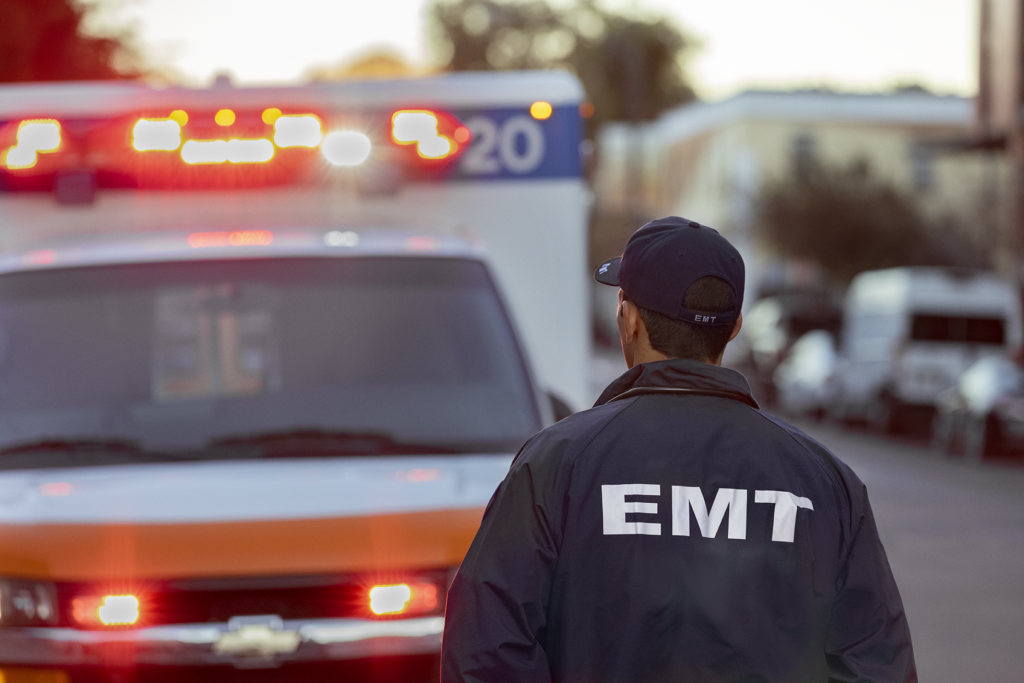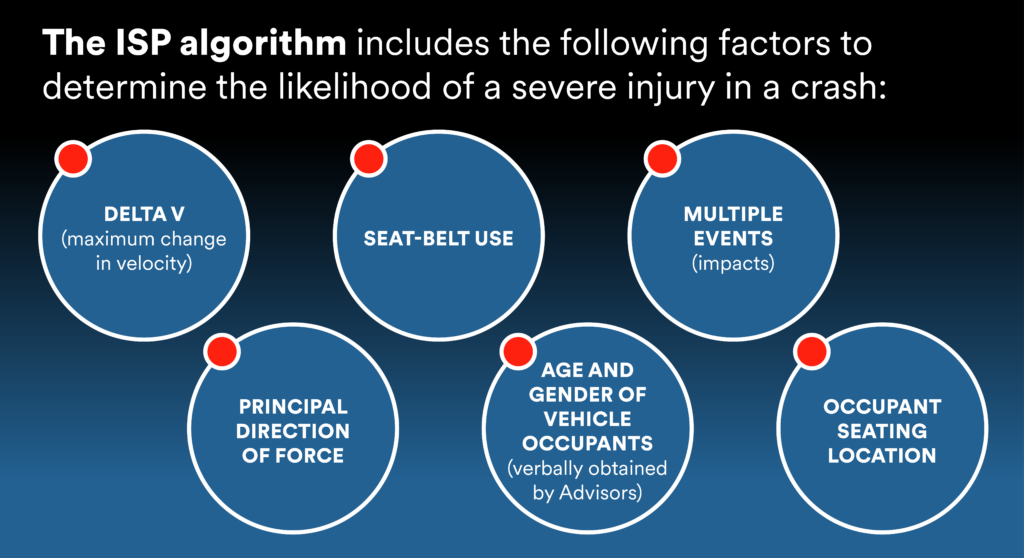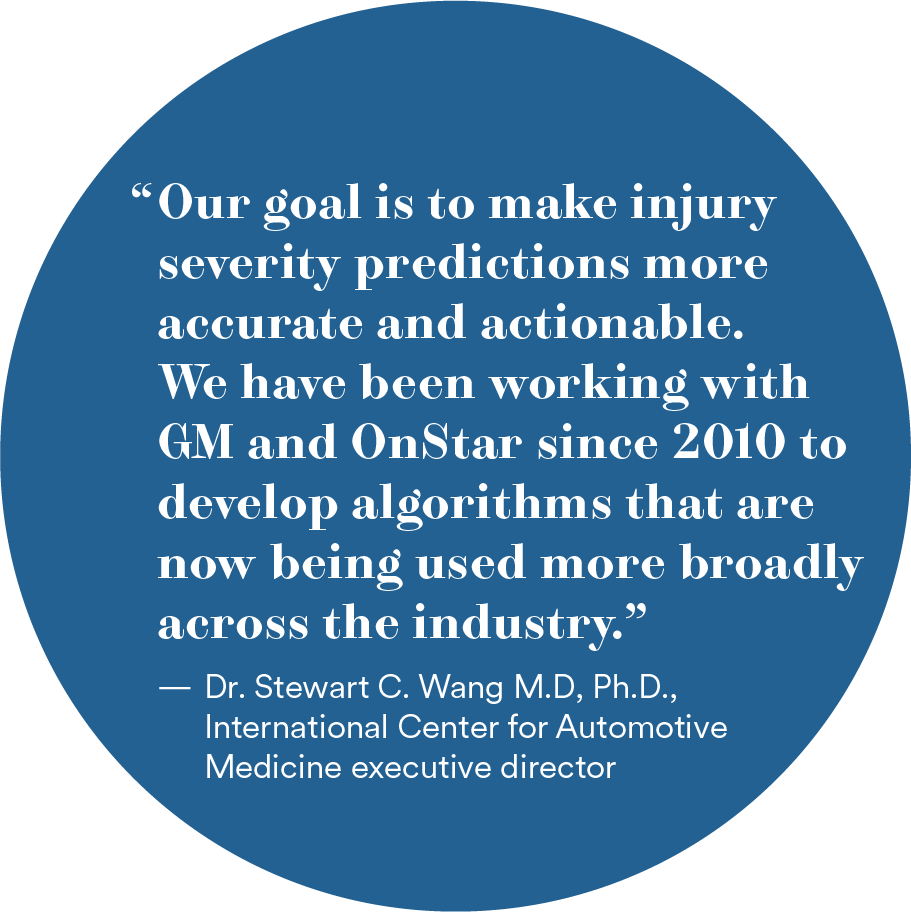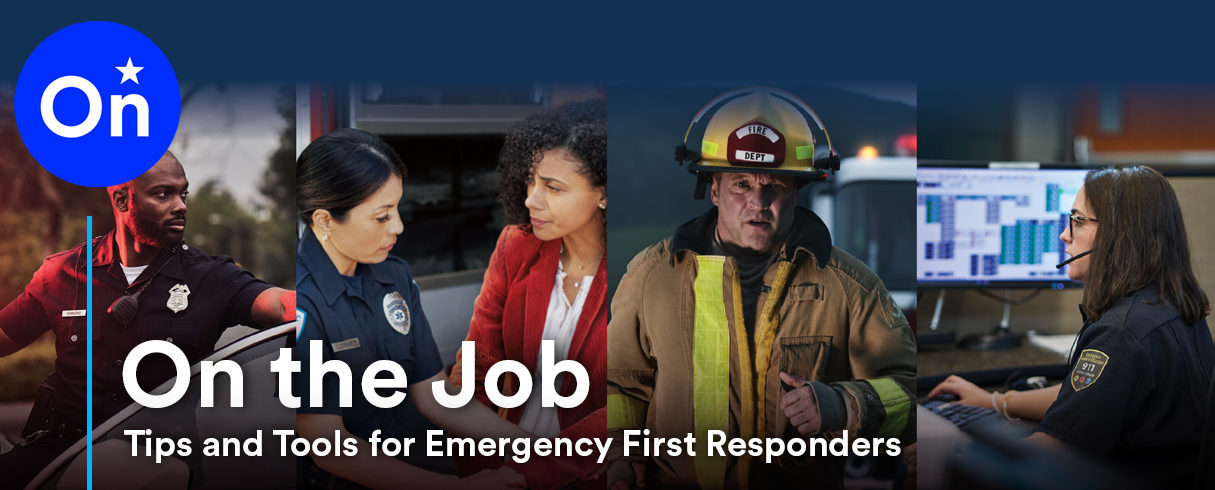
General Motors (GM), OnStar and the University of Michigan’s International Center for Automotive Medicine (ICAM) continue to research new methodologies to improve the connection between vehicles involved in crashes and the emergency response community. The latest study1 matches real-life injury outcomes with crash telemetry data and significantly improves the predicted identification of severe trauma during a crash.
“This research project continues to break new ground to improve the outcomes for crash victims,” says Dr. Stewart C. Wang M.D, Ph.D., executive director, ICAM. “Our goal is to make injury-severity predictions more accurate and actionable. We have been working with GM and OnStar since 2010 to develop algorithms that are now being used more broadly across the industry.”
Injury Severity Prediction2 (ISP) is a feature that alerts OnStar Advisors to the probability of severe injuries and provides important information that can be relayed to First Responders in the vital minutes that precede their arrival on the scene. When a vehicle crash takes place, several factors influence the possibility of occupants sustaining injuries — as well as the severity of any such injuries.

The real-time computer analysis of crash data determines the percent risk that a vehicle occupant sustained a severe injury. In validating the algorithm, Dr. Wang and his team have matched each ISP rating with corresponding police and EMS reports, and hospital diagnostic data. In accordance with Health Insurance Portability and Accountability Act (HIPAA) guidelines, all personal information in this study was removed to maintain occupant anonymity.
“If ISP predicts a high risk of severe injury, then the 9-1-1 Emergency Communications Center (ECC) and First Responders should be informed so that the appropriate transport resources and the type of hospital or trauma center are chosen,” Dr. Wang says.

With this information, OnStar Emergency Advisors can connect into the vehicle to inquire about the occupants’ condition. If occupants need emergency assistance — or are injured and cannot respond — the OnStar Emergency Advisor will immediately contact the appropriate ECC and provide the vehicle’s exact GPS location along with the important information supplied through ISP. Simultaneously, EMD-certified OnStar Emergency Advisors3 can provide Medical Priority Dispatch System (MPDS) protocol instructions until help arrives.
“EMS work best when they have an abundance of information to work from, including number of vehicles and occupants,” Dr. Wang says. “Urgent complaints such as difficulty breathing, chest pain, witnessed seizures, etc., that are volunteered are important to relay as well.”
OnStar Emergency Advisors have been alerted to crash incidents involving GM vehicles and verbally relaying vital crash data to 9-1-1 since 2004. Further adoption of the protocol will require:
- EMS Medical Directors and providers to be educated on the usefulness of crash data
- Implementation of criteria-based transport policies
Recently, OnStar and RapidDeploy have partnered to provide a Next Gen 9-1-1 integrated data feature for public safety to improve situational awareness of crash incidents, reduce call-handling time and help save lives. The cloud-native, data-driven solution provides critical crash details electronically to the ECC to help guide decisions on dispatch priority, patient care and transport of the patient, including where to transport and by what means — ground or air transportation. Watch the video below to learn more about the benefits of the OnStar/RapidDeploy partnership to First Responders and vehicle occupants involved in crashes.
In the future, ISP will be adjusted to remain in alignment with updated risk thresholds specified by the National Guideline for the Field Triage of Injured Patients. To improve clinical outcomes, a process of field triage is needed to identify seriously injured patients and quickly transport them to the appropriate care facility. The first Field Triage Decision Scheme was developed in 1986 and has been updated periodically over the past three decades. The most recent version, updated in 2021, is published online4 in the Journal of Trauma and Acute Care Surgery.
When EMS providers are alerted to the possibility of severe injuries, they are prepared to manage field triage more effectively and can direct the most severely injured parties to the appropriate trauma centers.
“For critically injured patients, the mortality rate can be decreased by 25 percent if they are transported to high-level trauma centers versus a non-trauma center,” Dr. Wang says.
ISP helps connect the right patients with the right treatment and helps First Responders apply their resources in the most effective and efficient manner while validating minor crashes that may not require a full EMS response.
“It allows EMS systems to appropriately deploy the proper resources to those who most urgently need them," Dr. Wang says. "It may allow them to respond more safely to lower-risk crashes.”
Learn more about Automatic Crash Response, RapidDeploy and Occupant-Based Injury Severity Prediction.5
- Owen SH, Wang SC, Zhang P. (2022). Field Assessment of GM/OnStar Occupant-based Injury Severity Prediction. MiraSmart. https://index.mirasmart.com/27esv/PDFfiles/27ESV-000123.pdf
- OnStar plan, working electrical system, cell reception and GPS signal required. OnStar links to emergency services. Not all vehicles may transmit all crash data. Requires paid plan and properly equipped vehicle. Visit onstar.com for details and system limitations.
- Certified by the International Academies of Emergency Dispatch® (IAED)
- Newgard, Craig D. MD, MPH, FACEP; Fischer, Peter E. MD; Gestring, Mark MD; Michaels, Holly N. MPH; Jurkovich, Gregory J. MD, FACS; Lerner, E. Brooke PhD, FAEMS; Fallat, Mary E. MD; Delbridge, Theodore R. MD, MPH; Brown, Joshua B. MD, MSc, FACS; Bulger, Eileen M. MD; the Writing Group for the 2021 National Expert Panel on Field Triage. National guideline for the field triage of injured patients: Recommendations of the National Expert Panel on Field Triage, 2021. Journal of Trauma and Acute Care Surgery 93(2):p e49-e60, August 2022. | DOI: 10.1097/TA.0000000000003627
- Owen, S. H., Joyner, J. W., Zhang, P., & Wang, S. C. (2021). Occupant-Based Injury Severity Prediction. Stapp car crash journal, 65, 17–28. https://doi.org/10.4271/2021-22-0002

